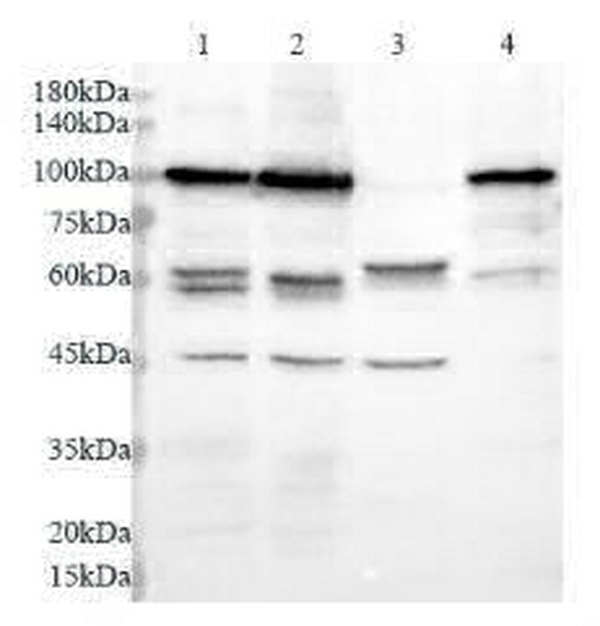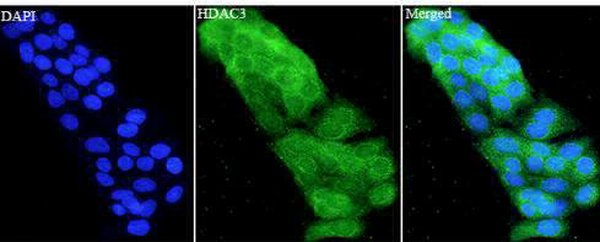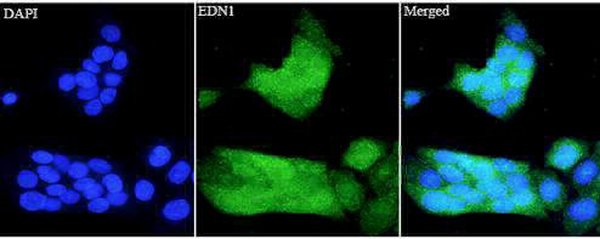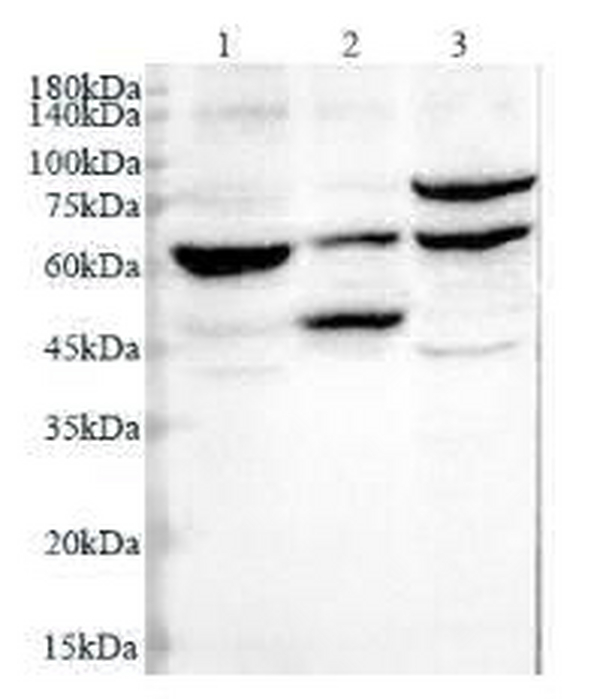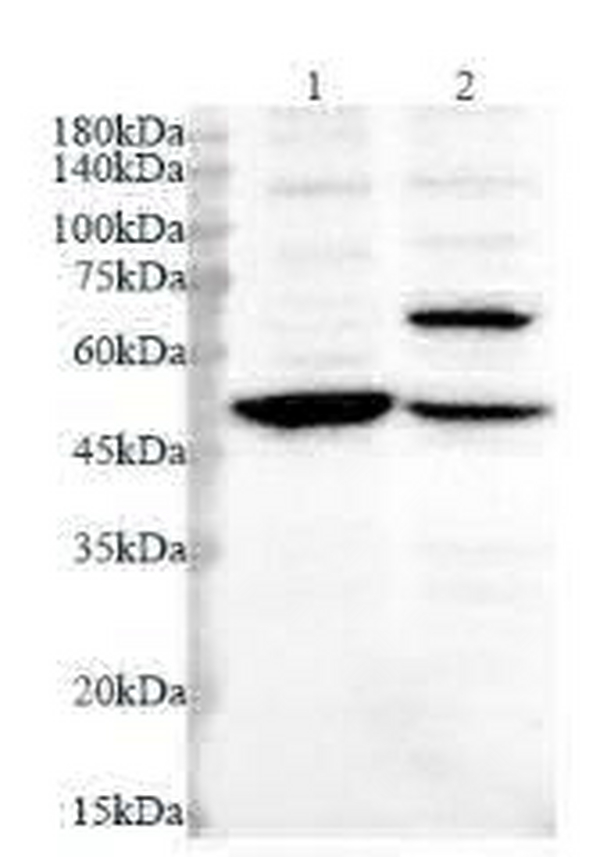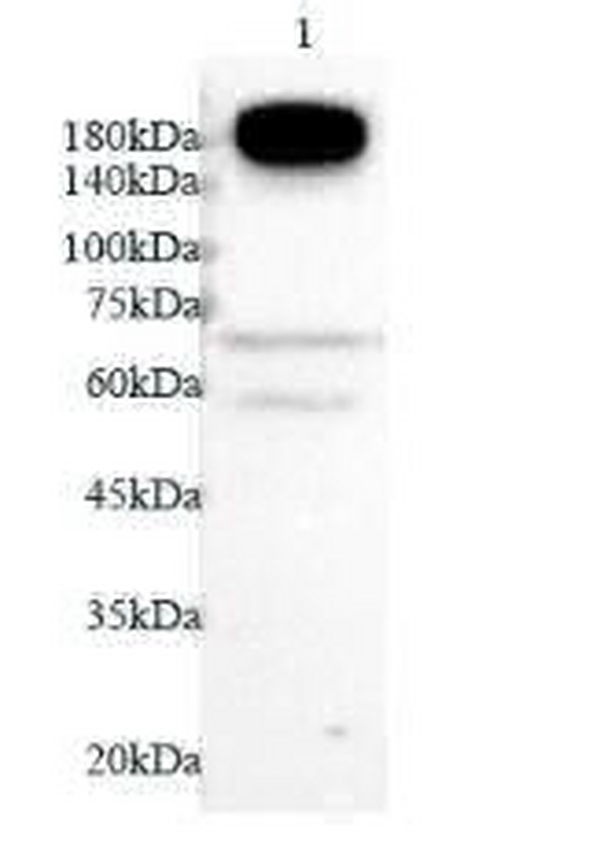QQ:3002763590
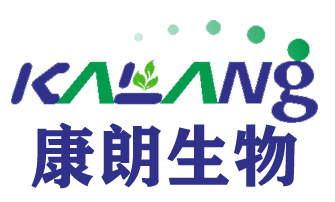

客服电话:021-61998208
Anti NSUN2 polyclonal antibody
NSUN2抗体
Anti NSUN2 polyclonal antibodyNSUN2, also known as SAKI or Misu (Myc-induced SUN-domain-containing protein) , is a methyltransferase which catalyses (cytosine-5-)-methylation of tRNA. NSUN2 is direct target gene of c-Myc and may act downstream of Myc to regulate epidermal cell growth and proliferation. NSUN2 is overexpressed in various cancer tissues and may be a valuable target for cancer therapy and a cancer diagnostic marker. Recently a splicing mutation in NSUN2 has been identified as the cause of a Dubowitz-like syndrome, an autosomal recessive disorder.
Anti HDAC3 polyclonal antibody
HDAC3抗体
Anti HDAC3 polyclonal antibodyHistone acetylation/deacetylation alters chromosome structure and affects transcription factor access to DNA. Histone deacetylase (HDAC) and histone acetyltransferase (HAT) are enzymes that regulate transcription by selectively deacetylating or acetylating the (-amino groups of lysines located near the amino termini of core histone proteins. At least 4 classes of HDAC were identified. HDAC3 is a class I HDAC. HDAC3 has histone deacetylase activity and may participate in the regulation of transcription through its binding with the zinc-finger transcription factor YY1. HDAC3 can also down-regulate p53 function and thus modulate cell growth and apoptosis. The gene encoding HDAC3 is regarded as a potential tumor suppressor gene. This antibody is a rabbit polyclonal antibody raised against an internal region of human HDAC3.
Anti EDN1 polyclonal antibody
EDN1抗体
Anti EDN1 polyclonal antibodyEDN1, also named as Endothelin-1, PPET1 and ET-1, belongs to the endothelin/sarafotoxin family. Endothelins are endothelium-derived vasoconstrictor peptides. Emerging basic science, and animal and human data all suggest that EDN1 is a potentially important contributor in the pathobiology of fibrosing disorders, including those that affect the lung(PMID:20055532).
Anti CTSD polyclonal antibody
CTSD抗体
Anti CTSD polyclonal antibodyCTSD(Cathepsin D) is also named as CPSD,belongs to the peptidase A1 family.It is ubiquitously expressed and is involved in proteolytic degradation, cell invasion, and apoptosis. The prepro-CTSD isoform has a molecular mass of 52 kDa, the pro-CTSD 48 kDa and the mature CTSD 32 kDa(PMID:10917609). It is a lysosomal acid protease found in neutrophils and monocytes and involved in the pathogenesis of several diseases such as breast cancer and possibly Alzheimer disease.Defects in CTSD are the cause of neuronal ceroid lipofuscinosis type 10 (CLN10).This antibody is specific to CTSD.
Anti IRF5 polyclonal antibody
IRF5抗体
Anti IRF5 polyclonal antibodyIRF5, also named as SLEB10, contians one IRF tryptophan pentad repeat DNA-binding domain and belongs to the IRF family. It is a transcription factor involved in the induction of interferons IFNA and INFB and inflammatory cytokines upon virus infection. It is activated by TLR7 or TLR8 signaling. Genetic variations in IRF5 are associated with susceptibility to inflammatory bowel disease type 14 (IBD14) and systemic lupus erythematosus type 10 (SLEB10). IRF5 is also used as M1 marcrophage lineage marker. Alternative splice variant encoding different isoforms exist.
Anti PDHX polyclonal antibody
PDHX抗体
Anti PDHX polyclonal antibodyPDHX is component X of the pyruvate dehydrogenase (PDH) complex. It is required for anchoring dihydrolipoamide dehydrogenase (E3) to the dihydrolipoamide transacetylase (E2) core of the pyruvate dehydrogenase complexes of eukaryotes. This specific binding is essential for a functional PDH complex. PDHX is expressed in the mithochondrion.
Anti UBC9 polyclonal antibody
UBC9抗体
Anti UBC9 polyclonal antibodyUBC9 is also named as UBE2I, UBCE9 and belongs to the ubiquitin-conjugating enzyme family. It is a homologue of the E2 ubiquitin conjugating enzyme and participates in the covalent linking of SUMO-1 molecule to the target protein. This protein is present at a high level in spleen and lung. Moderate level of UBC9 is detected in kidney and liver. Low amount of UBC9 is observed in brain, whereas the 18 kDa band of UBC9 is barely visible or absent in heart and skeletal muscle. In heart and muscle extracts the UBC9 antibodies recognizes a 38 kDa protein band,but this band is not visible in extracts of other rat tissues(PMID:14739995).
Anti COX4 polyclonal antibody
COX4抗体
Anti COX4 polyclonal antibodyCOX4I1, also named as COX4 and COXIV-1, belongs to the cytochrome c oxidase IV family. It is one of the nuclear-coded polypeptide chains of cytochrome c oxidase, the terminal oxidase in mitochondrial electron transport. COX4I1 is a marker for mitochondria. It has two isoforms (isoform 1 and 2). Isoform 1(COX4I1) is ubiquitously expressed and isoform 2 is highly expressed in lung tissues. COX4I1 is commonly used as a loading control. This antibody was generated against full length COX4I1 protein and cross reacts with COX4I2.
Anti CD11a polyclonal antibody
CD11a抗体
Anti CD11a polyclonal antibodyITGAL encodes the integrin alpha L chain. Integrins are heterodimeric integral membrane proteins composed of an alpha chain and a beta chain. This I-domain containing alpha integrin combines with the beta 2 chain (ITGB2) to form the integrin lymphocyte function-associated antigen-1 (LFA-1), which is expressed on all leukocytes. LFA-1 plays a central role in leukocyte intercellular adhesion through interactions with its ligands, ICAMs 1-3(intercellular adhesion molecules 1 through 3), and also functions in lymphocyte costimulatory signaling. Two transcript variants encoding different isoforms have been found for this gene.
Anti FGFR1 polyclonal antibody
FGFR1抗体
Anti FGFR1 polyclonal antibodyFibroblast growth factor receptor 1 (FGFR1) is a tyrosine-protein kinase that acts as cell-surface receptor for fibroblast growth factors. FGFR1 has been implicated in diverse biological processed including embryonic development, cell proliferation, differentiation, migration, and tumorigenesis. Mutations in FGFR1 gene have been associated with Pfeiffer syndrome, Jackson-Weiss syndrome, Antley-Bixler syndrome, osteoglophonic dysplasia, squamous cell lung cancer and autosomal dominant Kallmann syndrome. Alternatively spliced variants which encode different protein isoforms have been described.
最新动态
-
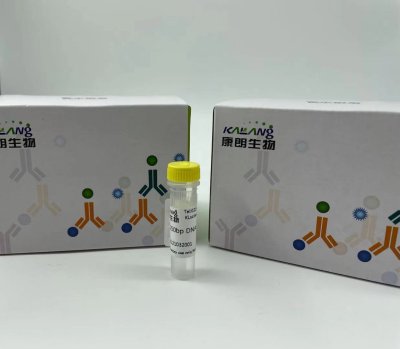
Anti-GNGT1 KL20092-001(50ul)
2021-10-11 -

Anti-GNGT1 antibody(50ul) KL20093-001
2021-10-11 -
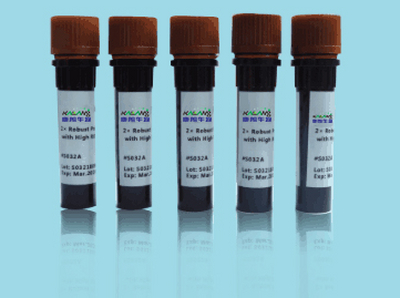
MUC5AC (PT2058) mouse Monoclonal Antibody
2021-01-06 -

mOrange mouse Monoclonal Antibody(Mix)
2021-01-05
热门标签
- Histone H3 rabbit Polyclonal Antibody Histone H3抗体
- EGFR rabbit Polyclonal Antibody EGFR抗体
- Cy3 Conjugated
- AbFluor™ 555 Conjugated
- AbFluor™ 680 Conjugated
- AbFluor™ 350 Conjugated
- AbFluor™ 647 Conjugated
- AbFluor™ 594 Conjugated
- AbFluor™ 405 Conjugated
- Cy5 Conjugated
- AbFluor™ 488 Conjugated
- Cyclophilin B抗体 Cyclophilin B Monoclonal Antibody(2B10)
- COX IV抗体 COX IV Monoclonal Antibody(6C8)
- PCNA抗体 PCNA Monoclonal Antibody(12D10)
- FAK rabbit Polyclonal Antibody FAK抗体
邮箱:3002763590@qq.com
电话:021-61998208

扫码关注微信公众号



